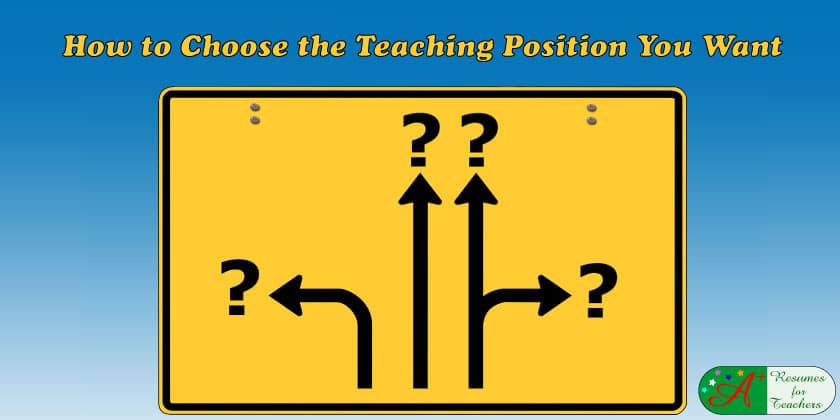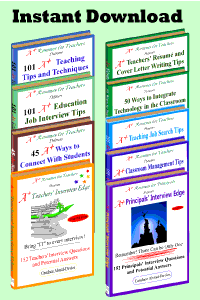Take the correct steps to choose the teaching position that is right for you. Now that you have decided to enter the world of education, you need to pick a subject area that interests you.
For many teachers, choosing the type of job is easy. They follow their passion. While for others, it can be difficult.
Subjects you can choose to teach include:
- Math
- Science
- Social Studies
- English Language Arts
- Music
- Physical Education
- Drama
- Technology
- Art
Which of these subjects do you find the most interesting?
Understand the Requirements for Your Desired Teaching Position
Teaching may be a foreign concept to you if you are a career changer, particularly if you have no prior instructional experience. Before crafting the initial version of your resume, you must clearly understand the expectations for educators in your desired subject area.
Once you have a better understanding of the fundamental tasks, you can tailor your resume and cover letter appropriately and prepare yourself for the interview that is sure to follow.
Some of the job responsibilities for the average teacher include:
- Designing and implementing stimulating lesson plans that cover the curriculum.
- Utilizing lectures, activities, demonstrations, thematic units, and group projects that accommodate multiple learning styles.
- Offering one-on-one assistance to meet students’ diverse needs.
- Establishing a positive, open, and comfortable learning environment where every student feels welcome and supported.
- Setting clear academic and behavioral guidelines and expectations.
- Following through with disciplinary measures to maintain an orderly and focused learning environment.
- Preparing and administering formal and informal assessment methods, including homework, quizzes, and examinations, to track student progress.
- Communicating progress to students and parents/guardians regularly.
- Coordinating with family members, teachers, and other staff to incorporate remedial programs and/or offer guidance and counseling to students in need.
- Participating in extracurricular activities, ranging from coaching sports to supervising detention or lunch.
Consider the Different Age Levels
The age level you wish to instruct will also determine additional tasks. For instance, if you are interested in early childhood education, lectures will be minimal. In contrast, hands-on activities, play-based learning, and demonstrations will be frequent teaching methods.
When teaching younger students, you can expect more significant engagement with parents. Additionally, the methods and tools you use will differ. Arts and crafts, songs, role-playing, games, storytelling, and similar activities are often employed to captivate and maintain the attention of young learners.
Consider the Differences in Content Areas
The content area you would like to teach will also affect your tasks and tools. For example, Science teachers utilize laboratory beakers, hot plates, Bunsen burners, microscopes, dissection tools, etc. The primary responsibility is safety, and the talent is to show a direct correlation between the classroom and the real world.
Social Studies teachers incorporate globes, history textbooks, and current events found in newspapers and online, thus bringing a better understanding of different cultures, religions, and ways of life to the forefront.
English Language Arts instructors integrate Shakespearean plays, poetry, essay writing, and novels to improve written communication skills and inspire creativity and imagination.
Math instructors use protractors, overhead projectors, geometric shapes, math manipulatives, and other items to offer visual demonstrations. The main goals are to help students tackle everyday situations that involve math and prepare them for the next academic level.
All Teaching Areas Have the Same Basic Responsibilities
Regardless of the position or grade level you are interested in, you must tackle the essential responsibilities and make the teaching experience your own. Bring the classroom to life via unique methods that work for you and excite your students. This talent will develop over time. But for right now, take it one step at a time, and look forward to your new career! Continue to take professional development to move your career in education forward.
Examine Your Talents and Interests to Determine Your Teaching Area
Which subject area did you excel at when you were in school? Are there any topics that you already have experience with? For instance, if you are an engineer or an environmentalist, you may want to look at Science; a choir director may lean toward Music; an archivist would thrive in Social Studies. These are examples, of course, and may not necessarily suit your situation, skill set, or desire.
Once you have chosen a course you know you will enjoy and think you can effectively teach, you must pick a grade level. Each level of education (elementary, middle school, high school, and post-secondary) requires certification and a unique skill set. The more open you are to teaching different grade levels, the better your chance of finding opportunities. So, try to keep an open mind during the job search process.
Elementary School
These students are being introduced to most subject areas. If you are looking to teach the rudimentary elements of a course, then this is the educational level you may wish to focus on.
Students in this age group enjoy learning and are enthusiastic, which can be incredibly rewarding for teachers. However, you must develop creative lesson plans to hold individuals’ attention and ensure they remain intent on learning.
Middle School
Teaching middle grades can be a challenge, as pupils are at a more rebellious stage and may not want to learn. If you are keen on a challenge, have extraordinary interpersonal skills, and want to teach more than just the basics, this is the right group of learners for you.
High School
Students will prepare themselves for post-secondary education and the working world. The marks they earn in twelfth grade will determine what academic institutions they can enter and what field they may wish to pursue.
If you want to deal with young adults and grasp concepts at a higher level, you may want to become a high school instructor.
Post-Secondary Instruction
Teaching at a higher education level requires an entirely different set of credentials, usually including a master’s degree or a Ph.D. in education. You will be teaching and working with students there to learn and develop their knowledge base in a particular field.
Consider Which Teaching Areas Are In Demand
Before deciding which type of position you want to pursue, you may also want to consider which areas are in significant demand in your local school district(s). Some schools have cut funding entirely for programs that are not part of the core requirements, so before picking a Physical Education, Art, or Music position, check to make sure these are even available in your area.
Depending on the state or region, there may be a shortage of Math or Science teachers (for example). This may be a fair tiebreaker if you have difficulty deciding between two or more subject areas. Furthermore, even if you pick a particular subject or age level now, it does not mean you can’t change your mind later.
Perhaps you start in Social Studies but find that you are better suited for English Language Arts. Alternatively, you begin as an elementary school educator but find you’d prefer teaching an older age group, so you progress to middle school. Nothing is written in stone; you can permanently alter your teaching area.
If you are unsure if you want to change careers to teaching, there are some questions you can ask yourself.
Do you need help creating a solid resume and cover letter? Contact Candace today at candoco@telus.net.
Feel free to view our services here.


